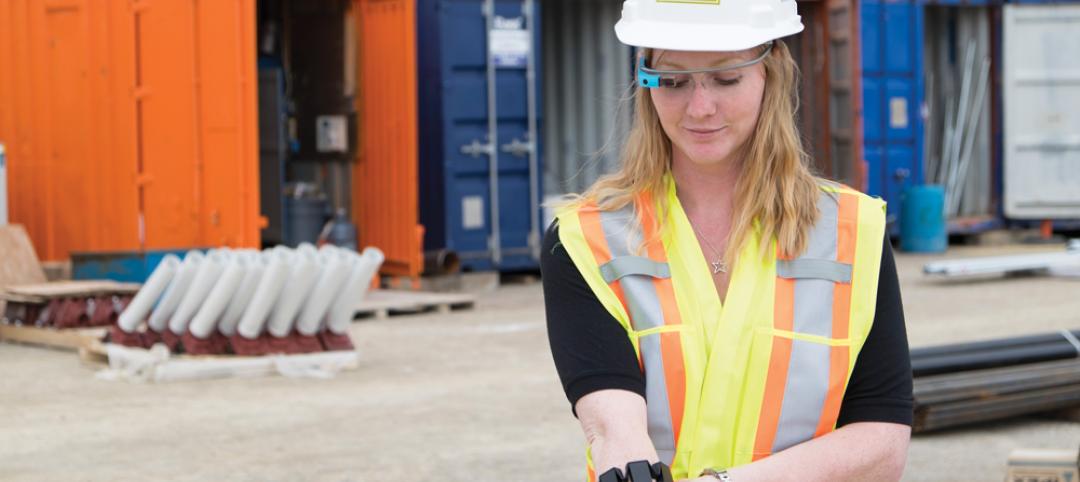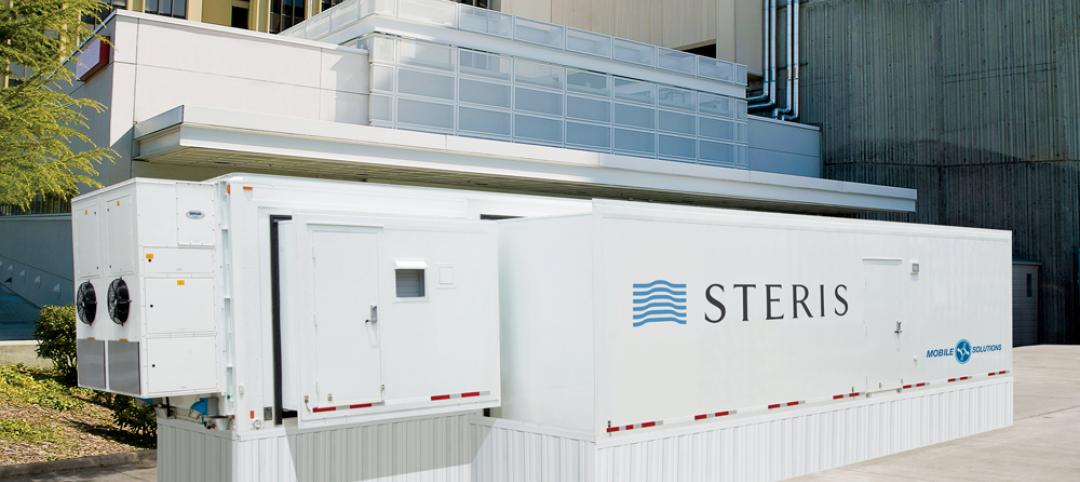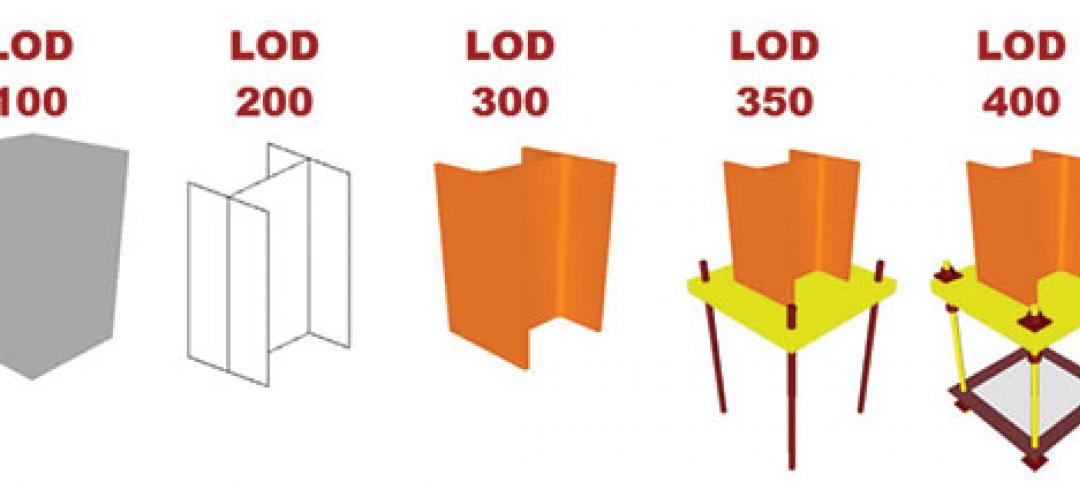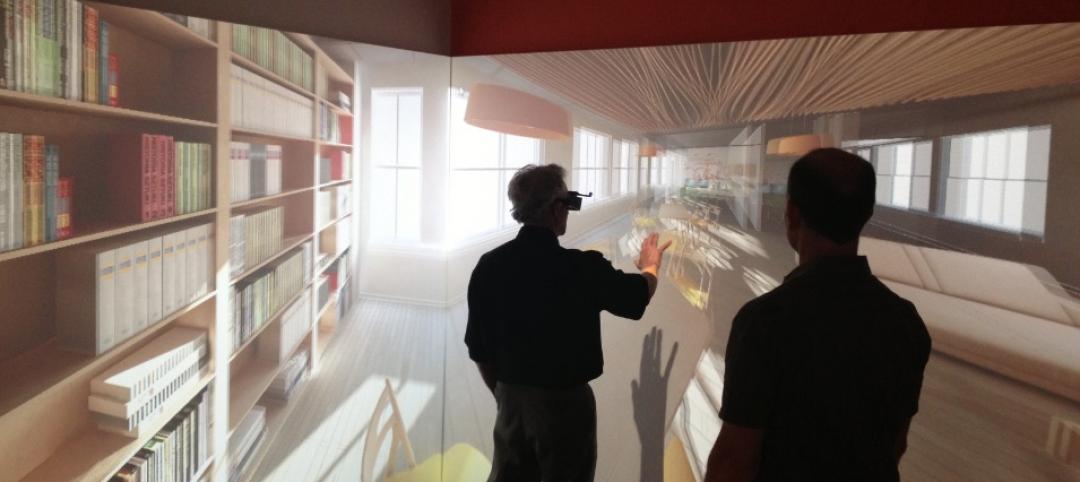 Three-dimensional design tools have revolutionized the way architects and engineers design buildings; in recent years, parametric modeling has enabled Building Teams to impart weight tolerances and other intelligent information to a finished design. Yet many designers say they use 3D most in the conceptual design stage, when detailed building information is not necessary and can actually encumber fluid iterations of a design.
Three-dimensional design tools have revolutionized the way architects and engineers design buildings; in recent years, parametric modeling has enabled Building Teams to impart weight tolerances and other intelligent information to a finished design. Yet many designers say they use 3D most in the conceptual design stage, when detailed building information is not necessary and can actually encumber fluid iterations of a design.Tools such as Google SketchUp, Z Corporation's 3D printing solutions, Luxology's Modo 401, and Autodesk's 3ds MAX allow architects to create renderings and models that dynamically demonstrate how designs will look and perform and display them to prospective clients, regulatory agencies, and other members of the Building Team. They also allow designers to use their talents for painting, sculpting, and drawing in a 3D environment more naturally than ever before.
“We've always wanted to make it a simple and horizontally appealing tool,” said John Bacus, product manager for SketchUp. “It's always a difficult balancing act between widely appealing and built-out with more capabilities.”
SketchUp: Conceptual design standard
SketchUp was originally developed, in 2000, by @Last Software as a general-purpose 3D content creation tool. Its creators, Brad Schell and Joe Esch, wanted to give design professionals the ability to draw on their computer screens with the same fluidity and freedom that they enjoyed working with pen and paper.
 |
 |
| 3D printed models allow clients such as Crate & Barrel (top) and TME Engineering (above) to show clients exact design models with color andmaterial choices taken directly from BIM files. |
“I learned architectural design by a process of creating 2D representations of three-dimensional spatial concepts,” said Steve Cavanaugh, principal and lead designer in DLR Group's Chicago office. “Using SketchUp allows those 3D ideas to flow a bit more easily into something representational for my collaborators and clients.”
advanced Google SketchUp Pro version (at $495 per license)
to about 5% of its PMs and PEs.
“On many of our projects, design details are limited,” said Chad Dorgan, vice president of quality at McCarthy. “SketchUp allows us to show how we're actually going to build it. For complex projects, such as hospitals, we are able to take barely 2D sketches and make them into full 3D models that don't have coordination issues, and are able to be constructed.”
While the free version of Google SketchUp can export 3D to the .skp, .dae, and the .kmz file formats, the Pro version extends exporting support to include the .3ds, .dae, .dwg, .dxf, .fbx, .obj, .xsi, and .wrl file formats. The latest version, Google SketchUp 7, which debuted in 2008, includes new features such as integration of SketchUp's Component Browser with Google 3D Warehouse (a repository of models created by SketchUp users), dynamic components that respond appropriately to scaling, phototextures that allow you to extract views from photographs and use them as textures in models, and an enhanced Ruby application program interface. The Ruby programming language allows you to write your own tools and import them using the API.
3D printing from A to Z
Since BIM delivers 3D representations of a conceptual design, it has taken away the need for physical shop-built models and created an entirely different workflow for designers. Yet clients and authorities with jurisdiction—some of whom aren't all that computer-savvy—still ask for physical models to exhibit at planning and zoning board meetings to show design intent to interested parties. Enter Burlington, Mass.-based Z Corporation, whose products can take 3D files and “print” multilayer powder and resin models that are as detailed as the 3D design they're based on, and can do so in a matter of hours instead of days.
“You have this beautiful 3D electronic model, you can print that the way you intended it instead of how someone in the model shop sees it,” said Olimpio DeMarco, director of business development at Z Corp. “We're seeing it used more with smaller firms as a way to differentiate themselves. It's a complement to BIM and 3D tools.”
Impact 3D Models, a start-up rapid-prototyping business in Chicago, uses a single Z Corporation 650 3D printer to create models for clients such as Lucien Lagrange Architects, Crate & Barrel, and BIM engineering firm TME, Little Rock, Ark. Architecture firms that have their own 3D printers include Robert A.M. Stern Architects and Cannon Design's Yazdani Studio (which owns a Z Corp 510 3D printer).
“Our average client purchases four models for a project,” said Matthew Mondo, vice president of Impact 3D Models. “The relative cost of the model material has gotten cheaper, about $3-5 per cubic inch of material, and with the ability to use CMYK color we can express more of what a designer would like to show.”
Z Corp's Z editpro color and texture-matching software ships with every printer. Most 3D design programs can automatically export their files to Z Corp's .stl file format for 3D printing.
 |
 |
| Brent Chamberlain uses modo 401 to create renderings of casino andshopping center projects for architectural clients. Chamberlain likes having the ability to render realistic light and fabric with simple tools. |
“We have to have a physical model to analyze our designs,” said Philip Ra, senior associate at Yazdani Studio. “Some of the things we create have to be felt and tested to be validated. In a typical day we can have five to eight models of a design created by midday using our 3D printer and narrow it down from there using our iterative process.”
Realistic rendering: modo 401
Three-dimensional animation and rendering is known popularly for what it can accomplish in video gaming and films such as “Avatar,” but the technology has also matured into a powerful platform for photorealistic architectural renderings. One such rendering tool is modo, the most recent version of which, modo 401, was released last June by its developer, Luxology, Mountain View, Calif. Modo 401 incorporates advanced features such as n-gons, 3D painting, and edge weighting for realistic imaging of advanced polygons, subdivision surfaces, modeling, sculpting, 3D painting, animation, and rendering.
While other 3D rendering programs utilize a large number of tools, each specific to a certain task, modo 401 uses a much smaller number of basic tools and allows designers to combine them (using the program's Tool Pipe). Any tool can be modified.
“We felt that workflow had not been addressed in high-end 3D graphics,” said Brad Peebler, founder and CEO of Luxology. “The real cost of high-end 3D is the human cost in training and usage, the man-hours it takes to create something. We wanted modo to be both intuitive and scalable to create faster, and not just better, rendering.”
Modo lets you paint directly onto a 3D model as well as to paint existing meshes onto the surface of an object. The paint system allows you to use a combination of tools, brushes, and inks to achieve many different effects and styles; for example, there are “airbrush” and “clone” tools, each of which is paired with a digital “brush” (such as “hard” or “soft”). The program's ability to perform micropolygon tesselation at render-time means it can create highly detailed surface textures like stucco, concrete, or asphalt.
 “It feels like an extension of how my brain thinks,” said Brent Chamberlain, principal of Brent Chamberlain & Associates, Park City, Utah, an architecture and interior design rendering service. “Working with forms has an artistic side to it that allows you to control the quality of light and use it as you would in a painting. It has a simple toolset, there aren't stacks of tools they've had and used for years. It's simple to learn, yet powerful.”
“It feels like an extension of how my brain thinks,” said Brent Chamberlain, principal of Brent Chamberlain & Associates, Park City, Utah, an architecture and interior design rendering service. “Working with forms has an artistic side to it that allows you to control the quality of light and use it as you would in a painting. It has a simple toolset, there aren't stacks of tools they've had and used for years. It's simple to learn, yet powerful.”Luxology technology is fully integrated into both Solidworks and Bentley Microstation and files from either of these systems can be easily imported into modo. Material assignment is done in modo 401 using a shader tree that is layer-based. Modo's renderer is a physically based ray-tracer that includes features such as dispersion and stereoscopic rendering.
The human hand: Your best design tool
At Yazdani Studio, a studio within Cannon Design's Los Angeles office, designers are taught that the most critical part of the design industry is the human hand. Led by design principal Mehrdad Yazdani, the studio requires its designers to make extensive use of Autodesk's 3ds Max and Maya digital animation, rendering, and compositing tools.
“In our iterative design process we will regularly go through 20 to 40 iterations of a single design,” said Yazdani Studio senior associate Philip Ra. “You can see what works and what doesn't.”
Using Autodesk's 3ds Max modeling, animation, and rendering package, Ra and his team were able to create more than 200 bridge designs in a period of one month for a government client in Chengdu (population: 10.44 million), the capital of China's Sichuan province. Using 3ds Max and the digital compositing tools in Maya, Ra and his team were able to illustrate design intent and show multiple environments to the client. 3ds Max's MAXScript scripting language can be used to automate repetitive tasks, combine existing functionality in new ways, and develop new tools and user interfaces to allow faster design turnaround times. The eventual designs for the bridges were all iterations of a pattern based on Dan Dan Mian noodles, a celebrated Sichuan cuisine.
“Using 3ds Max, you can visualize what you're building in its own 3D environment and try materials out early in the process,” Ra said. “I've been using it since 1993, and we're finally at the point where available computing power has not only caught up to the design tools, but maybe also surpassed them.”
Related Stories
| Dec 29, 2014
Wearable job site management system allows contractors to handle deficiencies with subtle hand and finger gestures [BD+C's 2014 Great Solutions Report]
Technology combines a smartglass visual device with a motion-sensing armband to simplify field management work. The innovation was named a 2014 Great Solution by the editors of Building Design+Construction.
| Dec 29, 2014
14 great solutions for the commercial construction market
Ideas are cheap. Solutions are what count. The latest installment in BD+C's Great Solutions series presents 14 ways AEC professionals, entrepreneurs, and other clever folk have overcome what seemed to be insoluble problems—from how to make bricks out of agricultural waste, to a new way to keep hospitals running clean during construction.
| Dec 29, 2014
HealthSpot station merges personalized healthcare with videoconferencing [BD+C's 2014 Great Solutions Report]
The HealthSpot station is an 8x5-foot, ADA-compliant mobile kiosk that lets patients access a network of board-certified physicians through interactive videoconferencing and medical devices. It was named a 2014 Great Solution by the editors of Building Design+Construction.
| Dec 28, 2014
Robots, drones, and printed buildings: The promise of automated construction
Building Teams across the globe are employing advanced robotics to simplify what is inherently a complex, messy process—construction.
BIM and Information Technology | Dec 28, 2014
The Big Data revolution: How data-driven design is transforming project planning
There are literally hundreds of applications for deep analytics in planning and design projects, not to mention the many benefits for construction teams, building owners, and facility managers. We profile some early successful applications.
| Dec 28, 2014
Using energy modeling to increase project value [AIA course]
This course, worth 1.0 AIA LU/HSW, explores how to increase project value through energy modeling, as well as how to conduct quick payback and net present value studies to identify which energy strategies are most viable for the project.
| Dec 28, 2014
The lowdown on LODs: Bringing clarity to BIM
These days, BIM is par for the course across most facets of design. But a lot of the conversation surrounding BIM still lacks clarity due to ambiguous terminology, a lack of clear-cut guiding illustrations, and widely varying implementation, writes GS&P's John Scannell.
| Dec 23, 2014
5 tech trends transforming BIM/VDC
From energy modeling on the fly to prefabrication of building systems, these advancements are potential game changers for AEC firms that are serious about building information modeling.
Sponsored | | Dec 16, 2014
Quadcopters save project team $15K in warranty work
On a recent trip to see what technology Todd Wynne and the rest of the team at Rogers-O’Brien Construction have been tinkering with, I had a chance to experience firsthand which new hardware innovations will one day be applied in the AEC space.
| Dec 8, 2014
The year’s boldest BIM/VDC themes
High-speed rendering software, custom APIs, virtual reality tools, and BIM workflow tips were among the hottest BIM/VDC topics in 2014.















